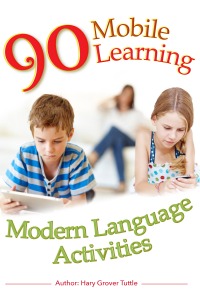Do world language students use technology n the classroom? Do their teachers go beyond having their students use technology simply for the drill and practice in vocabulary and grammar? Students can use laptops and mobile devices to hear authentic language, read authentic texts, read tweets about famous performers, see up-to-the-moment culture, watch video clips, see tv shows, and communicate with native speakers (Tuttle, 2013). Teachers can help students select those learning activities appropriate to their language level. Often these mobile activities have built in context to help the students understand the language. For example, an online newspaper headline often has a picture to help convey the meaning.
Students know how do use these mobile technologies for communication; their teachers just need to redirect their communication to being in the target language. Students enjoy looking at pictures and they can look at up-to-moment pictures of things happening in the target language area. Many students spend time watching videos on their own but now the world language teacher can have them watch video clips about a familiar situation.
How do your students use their mobile device in your world language class? Does technology take your students out into the target language world?
An ebook 90 Mobile Learning Modern Language Activities has over 70% of the interactive mobile activities to help develop students’ speaking skill; other language activities include listening, reading, writing and assessment. The students participate in authentic culture through many of these mobile activities.,

